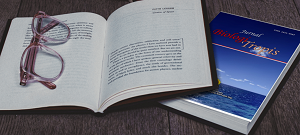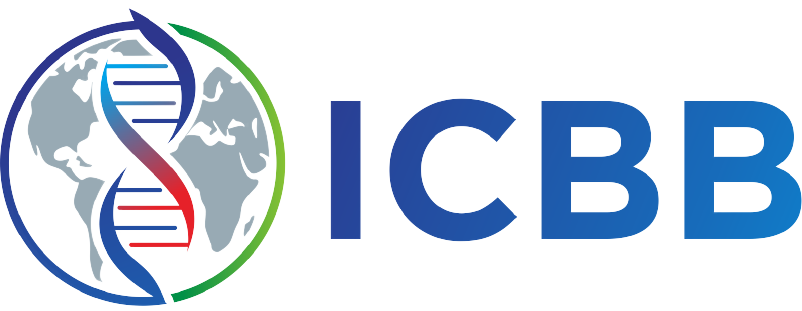Literature Review: Skin Aging in the Ederly Population
Authors
Baiq Ghefira Rojwani Putri Salsabila , Excell Defry Hardiant , Elsa Indah Suryani , Tsania Zulfa Salsabila , Puti Amelia Savitri , Lania Pradiva Untari , Andi Frieskha Naurah Paradiesta , Puja Rizkina Angelita , Muhammad Fikri Adidaifa , Disa Fadil Musyarof , Audi HidayatullahDOI:
10.29303/jbt.v25i3.10032Published:
2025-08-26Issue:
Vol. 25 No. 3 (2025): Juli-SeptemberKeywords:
Extrinsic factors, Intrinsic factors, Skin aging, ManagementArticles
Downloads
How to Cite
Downloads
Metrics
Abstract
Skin aging is a progressive degenerative process characterized by a decline in the structural and functional capacity of the skin to maintain its protective, regenerative, and homeostatic roles. It is influenced by both intrinsic factors, such as genetics, telomere shortening, mitochondrial dysfunction, hormonal changes, microbiota alterations, and decreased vitamin D production, and extrinsic factors, including ultraviolet radiation, pollution, smoking, oxidative stress, and lifestyle. Clinically, skin aging presents with thinning, dryness, loss of elasticity, fine to deep wrinkles, pigmentary changes, and benign skin lesions. The increasing elderly population, particularly in Indonesia, highlights the growing importance of addressing skin aging due to its impact not only on physical health but also on psychosocial well-being and quality of life. Management strategies include pharmacological approaches such as sunscreens, moisturizers, vitamin D and collagen supplementation, retinoids, and hormone replacement therapy, as well as non-pharmacological interventions including antioxidant-rich nutrition, hydration, allergen avoidance, wound care, dietary restriction, facial massage, and aesthetic procedures like stem cell therapy. Early prevention, timely recognition, and comprehensive management of skin aging are essential to support healthy aging and maintain the quality of life among the elderly.
References
Ahmad, Z., & Damayanti. (2018). Penuaan kulit: Patofisiologi dan manifestasi klinis (Skin aging: Pathophysiology and clinical manifestation). Berkala Ilmu Kesehatan Kulit dan Kelamin – Periodical of Dermatology and Venereology, 30(3), 208–215. DOI: https://doi.org/10.20473/bikk.V30.3.2018.208-215
Anggreini, D., Saputri, M., & Sari, N. (2024). Mengenal lebih dekat nilai SPF (Sun protecting factor) dalam kosmetik. Jurnal Pengabdian Masyarakat Tjut Nyak Dhien, 3(1), 33–38. DOI: https://doi.org/10.36490/jpmtnd.v3i1.1008.
Bianti, M. (2016). Kulit kering pada usia lanjut. Cermin Dunia Kedokteran, 43(10), 737–740.http://www.cdkjournal.com/index.php/CDK/article/download/871/616.
Brahmanti, H., & Puspitasari, G. D. (2023). Peran elastin dalam proses photoaging kulit. Journal of Dermatology Venereology and Aesthetic, 3(2), 40–51. https://jdva.ub.ac.id/index.php/jdva/article/view/27 (Accessed on August 19, 2025)
Damayanti. (2017). Penuaan kulit dan perawatan kulit dasar pada usia lanjut. Berkala Ilmu Kesehatan Kulit dan Kelamin – Periodical of Dermatology and Venereology, 29(1), 73–80. https://e-journal.unair.ac.id
Friska, B., Usraleli, U., Idayanti, I., Magdalena, M., & Sakhnan, R. (2020). The relationship of family support with the quality of elderly living in sidomulyo health center work area in Pekanbaru road. JPK: Jurnal Proteksi Kesehatan, 9(1), 1-8. DOI: https://doi.org/10.36929/jpk.v9i1.194.
Hamp, A., Anderson, J., Laughter, M. R., Anderson, J. B., Presley, C. L., Rundle, C. W., & Dellavalle, R. P. (2023). Gua-sha, jade roller, and facial massage: Are there benefits within dermatology? Journal of Cosmetic Dermatology, 22(2), 700–703. DOI: https://doi.org/10.1111/jocd.15421
Literatur review: Penuaan dini pada kulit. (2023). JGK Jurnal Gizi dan Kesehatan, 3(2). DOI: https://doi.org/10.36086/jgk.v3i2
Murlistyarini, S., et al. (2018). Intisari ilmu kesehatan kulit kelamin (1st ed.). UB Press. ISBN: 9786024324490
Ohkawa, Y., Tanoue, H., & Fukai, K. (2023). Physiological and psychological effectiveness of facial massage in women: A randomized crossover trial. Journal of International Nursing Research, 2(1), e2021-0005–e2021-0005. DOI: https://doi.org/10.53044/jinr.2021-0005
Pasaribu, R., Lamanepa, G. H., & Mukin, M. U. J. (2022). Waktu berjemur yang tepat agar tubuh dapat memproduksi vitamin D secara optimal berdasarkan pola intensitas radiasi UVB. Jurnal Pendidikan Fisika dan Sains (JPFS), 5(2), 51–56. DOI: http://dx.doi.org/10.52188/jpfs.v5i2.266
Prakoeswa, F. R. S., & Sari, W. A. (2022). Penuaan kulit dan terapi yang aman bagi geriatri: Artikel review. Jurnal Sains dan Kesehatan, 4(5), 557–568. DOI: https://doi.org/10.25026/jsk.v4i5.1294
Rachmawati, P., Sagala, R. J., & Kambira, P. F. A. (2021). Tinjauan pustaka bentuk sediaan tabir surya bahan alam, keamanan, dan efektivitas tabir surya. Jurnal Farmasi Indonesia, 13(1), 25–39. DOI: https://doi.org/10.35617/jfionline.v13i1.45
Rosyada, R., & Jusuf, N. K. (2024). Hubungan nutrisi dan penuaan kulit. Media Dermato Venereologica Indonesiana, 51(4). DOI: https://doi.org/10.33820/mdvi.v51i4.432
Sakina, A. P., Ifada, B. I., Aulia Kusuma, C. P., Ariyani, D. P., Nabila, H., Putu Rummika Padmawati, I. A., ... & Puspitasari, H. P. (2024). Pengetahuan dan Penggunaan Sunscreen pada Anak Usia Sekolah di Surabaya. Jurnal Farmasi Komunitas, 11(2). DOI: https://doi.org/10.20473/jfk.v11i2.44883
Saputra, D. H. (2021). Peran vitamin D dalam kesehatan kulit. Cermin Dunia Kedokteran, 48(2), 89. DOI: https://doi.org/10.55175/cdk.v48i2.1302
Silva, E. S. da, & Dumith, S. C. (2019). Non-use of sunscreen among adults and the elderly in southern Brazil. Anais Brasileiros de Dermatologia, 94(5), 567–573. DOI: https://doi.org/10.1016/j.abd.2018.10.002
Sutanto, N. R., et al. (2023). Perkembangan terkini proses penuaan kulit. Jurnal Kedokteran Meditek, 29(1), 98–108. DOI: https://doi.org/10.36452/jkdoktmeditek.v29i1.2455.
Taghupia, I. V., Setyaningrum, T., & Rejeki, P. S. (2024). Extrinsic risk factors for skin aging. World Journal of Advanced Research and Reviews, 24(3), 2692–2695. DOI: https://doi.org/10.1111/bjd.13602.2693.
Yusharyahya, S. N. (2021). Mekanisme penuaan kulit sebagai dasar pencegahan dan pengobatan kulit menua. eJournal Kedokteran Indonesia, 9(2), 150. DOI: https://doi.org/10.23886/ejki.9.49.150
License
Copyright (c) 2025 Baiq Ghefira Rojwani Putri Salsabila, Excell Defry Hardiant, Elsa Indah Suryani, Tsania Zulfa Salsabila, Puti Amelia Savitri, Lania Pradiva Untari, Andi Frieskha Naurah Paradiesta, Puja Rizkina Angelita, Muhammad Fikri Adidaifa, Disa Fadil Musyarof, Audi Hidayatullah

This work is licensed under a Creative Commons Attribution 4.0 International License.

Jurnal Biologi Tropis is licensed under a Creative Commons Attribution 4.0 International License.
The copyright of the received article shall be assigned to the author as the owner of the paper. The intended copyright includes the right to publish the article in various forms (including reprints). The journal maintains the publishing rights to the published articles.
Authors are permitted to disseminate published articles by sharing the link/DOI of the article at the journal. Authors are allowed to use their articles for any legal purposes deemed necessary without written permission from the journal with an acknowledgment of initial publication to this journal.


























